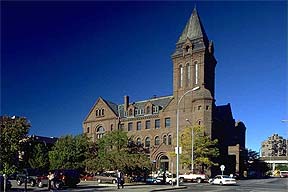A city succeeds when people want to live, work and play there – and its unique heritage is no small part of that equation. Rochester is no exception. We are proud of this city’s rich history as an incubator of social justice and innovation, and we take great satisfaction in engaging that history each day as we move through its buildings and landscape. We recognize the importance of preserving our heritage.
Read Preserving our Heritage(PDF) and learn more about our ongoing pledge to protecting Rochester's many beautiful and distinctive buildings and neighborhoods. On these pages, you will see that we pay close attention to preservation because we value it and what follows is evidence of our commitment.
We hope you will also gain an understanding into the process that guides this effort. Successful preservation requires us to do more than determine which buildings are worthy of safekeeping. We must also find the necessary resources to rehabilitate and maintain them. In most instances, this is not something that can be accomplished by the government alone. The City strives to preserve significant structures whenever we can, but sometimes a building’s condition, location and the economics of rehabilitation make it impossible.
I hope you find this document instructive and informative.
Rochester’s proud history is reflected in many buildings which continue to play an important role in the development of our  neighborhoods and commercial districts. We are committed to preserving as many of these landmarks as practically possible.
neighborhoods and commercial districts. We are committed to preserving as many of these landmarks as practically possible.
But that commitment requires difficult choices because there are not always enough resources to save every building and some opportunities are fleeting. This document provides examples of those choices and helps explain the process that guides them.
Preservation Ordinance: Enacted in 1969, the City’s Preservation Ordinance allows for the designation of landmark properties and districts and defines the process to manage physical changes to these properties. Rochester is home to 75 designated Landmark Properties and eight Preservation Districts, which hold more than 1,700 properties that are eligible for historic preservation. Exterior changes to these designated landmarks and district properties fall under the oversight of the Preservation Board. Examples of designated landmark properties are City Hall, Sibley Building, Times Square Building, E. E. Boynton House built by Frank Lloyd Wright and many others throughout the city.
Adaptive Re-use: In addition to preserving landmarks through official designations, the City actively encourages private real estate developers to preserve the historic character and architectural significance in many of our oldest buildings. The practice of “adaptive re-use” maintains a property’s distinctive appearance which is often difficult to create through new construction. However, the cost of preservation is sometimes prohibitive and some buildings must be demolished to make room for new opportunities, which enhance the long-term viability of its surrounding neighborhood.
###